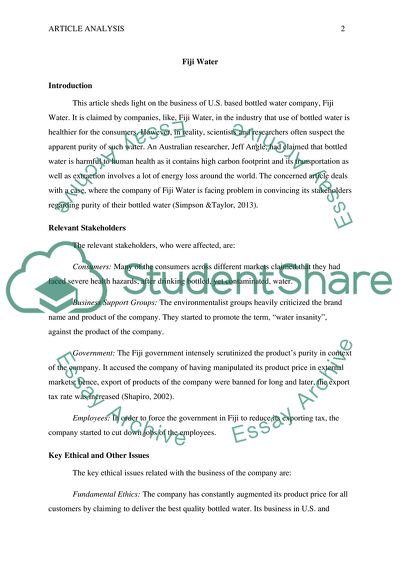Cite this document
(Fiji Water and Bringing the Environment Down to Earth Article Example | Topics and Well Written Essays - 1500 words, n.d.)
Fiji Water and Bringing the Environment Down to Earth Article Example | Topics and Well Written Essays - 1500 words. https://studentshare.org/environmental-studies/1809809-summaries-the-case-fiji-water-and-the-article-bringing-the-environment-down-to-earth
Fiji Water and Bringing the Environment Down to Earth Article Example | Topics and Well Written Essays - 1500 words. https://studentshare.org/environmental-studies/1809809-summaries-the-case-fiji-water-and-the-article-bringing-the-environment-down-to-earth
(Fiji Water and Bringing the Environment Down to Earth Article Example | Topics and Well Written Essays - 1500 Words)
Fiji Water and Bringing the Environment Down to Earth Article Example | Topics and Well Written Essays - 1500 Words. https://studentshare.org/environmental-studies/1809809-summaries-the-case-fiji-water-and-the-article-bringing-the-environment-down-to-earth.
Fiji Water and Bringing the Environment Down to Earth Article Example | Topics and Well Written Essays - 1500 Words. https://studentshare.org/environmental-studies/1809809-summaries-the-case-fiji-water-and-the-article-bringing-the-environment-down-to-earth.
“Fiji Water and Bringing the Environment Down to Earth Article Example | Topics and Well Written Essays - 1500 Words”. https://studentshare.org/environmental-studies/1809809-summaries-the-case-fiji-water-and-the-article-bringing-the-environment-down-to-earth.


